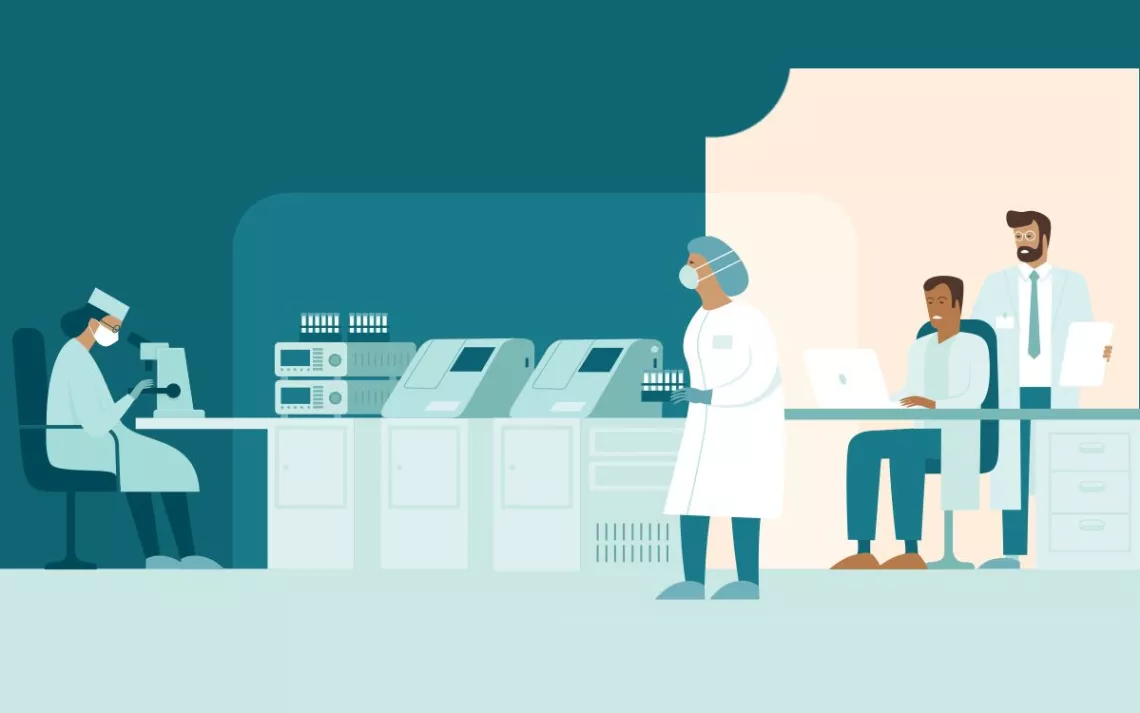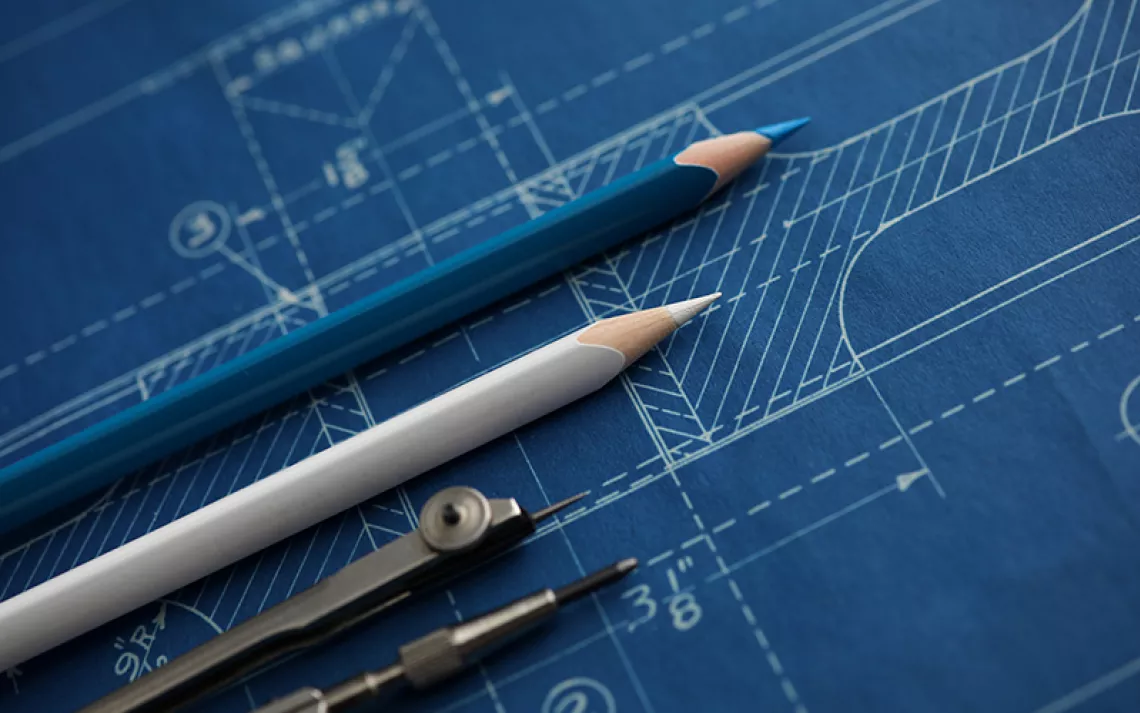How the Pandemic Is Changing STEM Education
How in-person does science have to be?
This year’s back-to-school is unlike any other. Parents, teachers, and students are weighing safety against the desire to be in the classroom. Campuses that are usually buzzing with students are nearly empty. Dorms are sites of isolation rather than community, places where students are stuck before the glare of a laptop. Even colleges that have opted to have in-person classes need to prepare to pivot online in case of a COVID-19 outbreak.
But one type of class is particularly difficult to move online: lab classes.
Many courses in the STEM fields—science, technology, engineering, and mathematics—include lab or field classes as practical components to an otherwise theoretical course. Professors are now tasked with converting this experiential learning—which relies on the student’s ability to touch and see and feel the lesson—to a flat, remote interface.
Students need to leave university with a specific set of skills and expertise that matches the degree they hold, and COVID-19 threatens to change the meaning of a STEM degree. Can a student graduate in biology having never learned to perform fundamental procedures like the polymerase chain reaction? Can they graduate in forestry if they’ve never done fieldwork in an actual forest?
We’re about to find out. According to The Chronicle of Higher Education, 10 percent of colleges planned to begin the semester fully online at the start of the school year, about 4 percent were holding classes fully in person, and 78 percent were doing a hybrid of online and in-person education (the remaining 8 percent were still deciding). Here are a few ways these different strategies are affecting STEM in higher education.
Any in-person instruction is controversial.
Even if students are allowed to go into labs, not all students want to risk being there in person. At some colleges, faculty, graduate students, and kitchen and custodial staff don’t have the option of working online—if they want to keep their jobs, they have to return to campus. Many faculty, students, and staff are also struggling with childcare.
At Arizona State University, labs that can’t easily be moved online are happening in person. ASU required a negative test result before students were allowed to return to dorms, and developed an FDA-approved rapid saliva-based COVID-19 test, provided free to students.
The school says that it is regularly testing a “statistically significant” percentage of the students, hoping to keep tabs on the presence of the virus. Still, the reopening has already received pushback from some faculty and staff, who published an open letter to school administration on Medium, saying that ASU’s policies were endangering school staff and that outbreaks on campus could easily spread to the larger community and vice versa, since many students live off-campus with family and commute into school.
Several students have been suspended for violating the school’s COVID guidelines: "Everyone—including faculty, staff, students, and visitors—is required to wear face coverings in classrooms, labs, offices, and all ASU outdoor spaces (except while eating). Students and employees are required to do a daily health check through the ASU mobile app or healthcheck.asu.edu, which involves monitoring their temperature and answering questions about any symptoms." Students can’t bring visitors into the dorms or go to parties off-campus that don’t follow public health guidelines. Since August 1, however, 1,330 cases have been recorded at ASU.
What does “equal opportunity” mean when everything’s online?
Now that computer labs are closed and many students are attending remotely, schools now also need to make sure that all students have access to a computer and the internet.
“The pandemic has brought out a lot of inequities,” says Lynn Huntsinger, the associate dean of instruction and student affairs at UC Berkeley’s Rausser College of Natural Resources. “Among them, do you have a good place to work at home, and do you have good internet?”
Many colleges are expanding laptop loaning programs and adding wi-fi hotspots if internet connectivity is a problem. Some lab classes require specialized (and expensive) software, like ArcGIS or AdobeSuite or R. These can require higher computing power than most entry-level laptops have, so some schools are working to allow students to log in to on-campus computers remotely, allowing them to use the greater processing power to complete their assignments.
All that puts an added financial strain on already-strapped college budgets and requires new levels of technical troubleshooting for students and faculty.
Your lab’s in the mail.
Certain lab classes—like chemistry—require a lot of expensive technical and safety equipment. Those are the ones that, if possible, are taking place on campus. When the classes are moved online, students have to watch their teachers perform chemistry reactions on video, rather than performing them themselves.
For labs in which the materials are less hazardous, professors work with students to create their own labs at home. At UC Berkeley, Lynn Huntsinger—who teaches ecology in addition to her role as a dean—is sending her students a lab kit with specimens, seeds, jars, and all the equipment they need for a soil lab. Instead of students planting in the campus greenhouse, she’s having them replicate the experiment at home.
At UMass Amherst, ecology professor Kristina Stinson usually spends the lab sessions for her plant-identification class wandering the tree-filled campus, with students stopping to see, touch, smell, and discuss the trademarks of each species that they’re studying.
Now, her four-hour lab classes feature a one-hour lecture, then a two-hour break during which students leave and then return for the final hour with videos of local specimens to share. Even if people are in different locations, Stinson said, they should be able to identify similar species. Her students—whether in California or another country—are still expected to be able to successfully identify New England plant life.
She’s relying a lot more heavily on visual aids than she normally does in this course, showing pictures of species in different seasons and sizes. “It’s important to recognize the faculty who are putting in all these extra hours and care to make sure students get what they need,” Stinson said. “We’re talking around the country about how we’re doing this.”
A good lab job is hard to find.
For many STEM students, working as assistants in research labs is critical for learning what it’s like to work in a particular field. Undergraduate research experience can also be critical to getting into a graduate program or medical school.
Some labs are still in operation on campus, with new safety protocols. But getting your foot in the door at a research lab is trickier when you’re at home on your laptop, instead of chatting with your professor or a grad student after class.
Some labs have shifted their research toward more online-friendly topics like data analysis. That might not be such a bad thing, says Elizabeth Crook, a professor of Earth System Science at UC Irvine. Crook has already seen more interest in her GIS classes and research, which translates better to an online format than traditional lab or field classes do, and presents more job opportunities to students. As long as the university is providing the same amount of mentorship opportunities through internships or research programs, she says, students can learn as much studying remotely as they would have in person.
Some schools are creating their own opportunities. Jennifer Vanos, a professor of sustainability who researches urban climate at Arizona State University, said that in the School of Sustainability, upperclassmen need to complete an internship to graduate. Many companies aren’t hiring, so her lab created a research internship in an attempt to fill that gap. Other labs are minimizing crowding by refraining from taking on new students. At UMass Lowell, students can only work in a lab as an undergraduate if they already did before the pandemic and have expertise that’s relevant to the project.
The pandemic has made research a lot harder, says Vanos. Many projects slowed or stalled last spring, and professors have spent the summer scrambling to move their classes online. Vanos’s field research studying extreme heat has continued, but her research involving human subjects is cancelled. Equipment isn’t as easy to come by—the sensors that she ordered didn’t arrive for four months because of supply chain disruptions in China.
Also, says Vanos, because many researchers spent the spring and summer concentrating on working through data and writing up research papers instead of doing labwork, that’s led to a glut of papers ready for review. As a reviewer herself, Vanos said she’s getting way more requests than normal, and she has to say no a lot. Female reviewers are especially hard to find, she says. She and her colleagues suspect it's because many women are taking the lead on childcare, and she’s worried about the long-term implications. “We need the female perspective on these reviews.”
*
Online education has some upsides. Huntsinger is excited to have guest lectures from anywhere. At UMass Lowell, Juliette Rooney-Varga leads the World Climate simulation, having students play the part of countries, businesses, and other key players in climate policy.
Since the pandemic forced her to adapt her climate simulations for web presentation, Rooney-Varga has made World Climate available for anyone to use.
“A lot of people are viewing this as a temporary thing,” Rooney-Varga said. For her, the key has been to design programs that she’ll continue to use even after the pandemic is over. “With this online format, geography is less important than it ever has been,” Rooney-Varga said. “You can reach people anywhere at any time.”
 The Magazine of The Sierra Club
The Magazine of The Sierra Club




